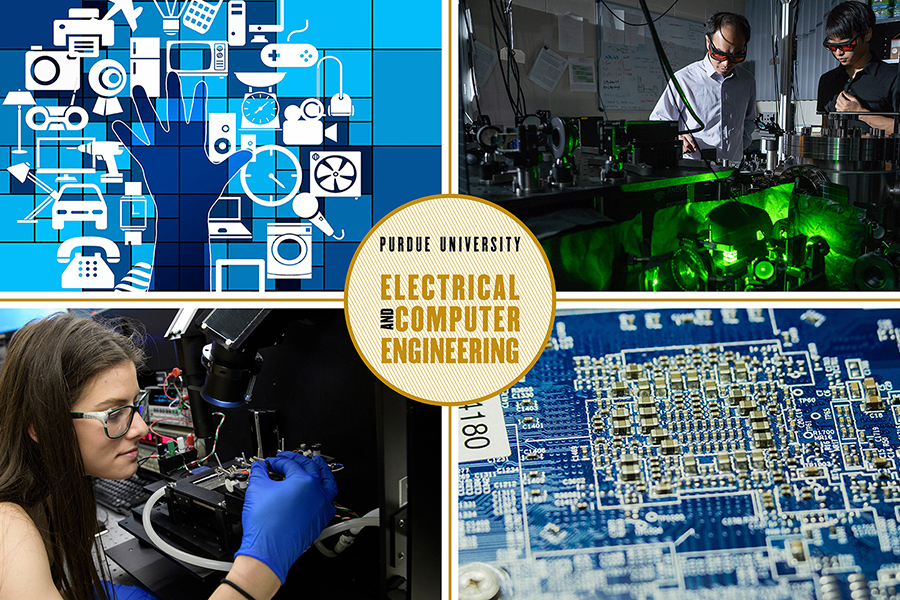School of Electrical and Computer Engineering restructures to strengthen lead, impact in virtual and physical spheres

Purdue ECE research activities traditionally had been organized into eight areas: Automatic Control; Biomedical Imaging and Sensing; Communications, Networking, Signal and Image Processing; Computer Engineering; Fields and Optics; Microelectronics and Nanotechnology; Power and Energy Systems; and VLSI and Circuit Design.
The reorganization focuses on strengthening interdisciplinary research efforts at the interface between the physical and virtual worlds of electrical and computer engineering. Quantum engineering, autonomous systems and brain-inspired computing are just a few examples of areas at this intersection.
“The School of Electrical and Computer Engineering is the largest school at Purdue and one of the largest in the nation,” said Dimitrios Peroulis, head and Reilly Professor of Electrical and Computer Engineering. “Our new structure is designed to help us think big, magnifying our capabilities and resolving to be the ‘first, best or only’ in everything we do. It also aims to build conversation groups among communities that are not necessarily attending the same conferences or events.”
Propelling ECE ahead of educational and industry trends, the school has been organized into two complementary Sections:
- Electrical Engineering (EE) – primarily covering the physical side
- Computer and Information Systems Engineering (CISE) – concentrated on the virtual side
“We need to focus on what matters most: we need to ensure that our research findings not only are relevant within our own discipline, but also, and more importantly, benefit society at large,” said Peroulis.
The restructuring process was initiated by Pedro Irazoqui while he served as interim ECE head from August 2018 through April 2019. Irazoqui led multiple faculty meetings to discuss and develop the reorganization, culminating in overwhelming faculty approval of the new names and structure.
In addition to spurring research initiatives, the restructuring will help create new opportunities for industry engagement, startups, global partnerships, and workforce development. Furthermore, it is expected to strengthen curriculum innovation efforts already underway at graduate and undergraduate levels.
For more information, please contact:
Dimitrios Peroulis, kjurss@purdue.edu, (765) 494-3539
Kristin Malavenda, kmalaven@purdue.edu, (765) 494-3547
